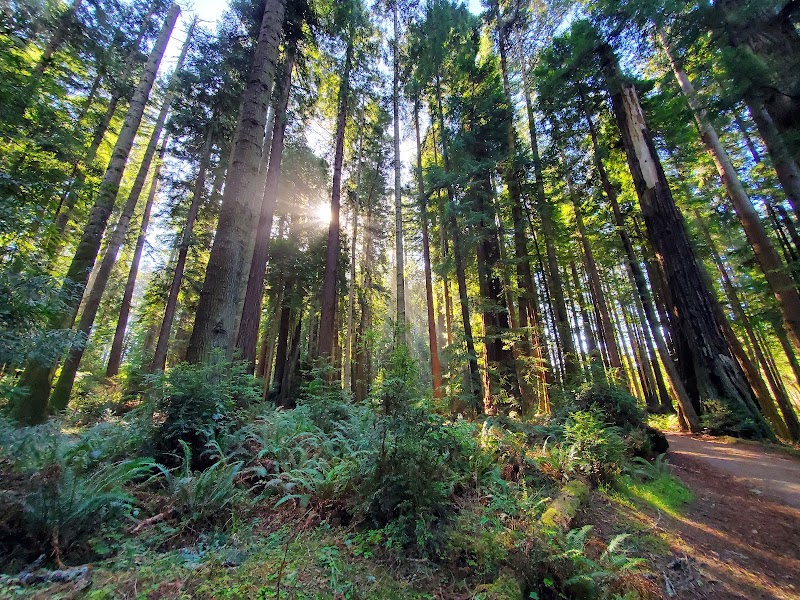
Wandering Through Towering Redwoods and Discovering Hidden Gems on the Lost Coast Trail, Eureka
Explore the rugged beauty of California’s Lost Coast Trail as it winds through towering redwoods and wild shores. This guide offers practical insights and sensory details to help you prepare for an unforgettable hike along one of the West Coast’s most remote coastal trails.
Check Tidal Charts Before You Go
Tidal windows determine safe crossings and camping spots along the coast. Plan your daily hikes to align with low tides for easier, safer beach travel.
Wear Sturdy Waterproof Footwear
Expect wet sand, slick rocks, and the occasional creek crossing. Waterproof boots with good traction help prevent slips and keep feet dry.
Carry and Purify Water
Freshwater sources are limited and often unreliable. Bring at least three liters per day and a compact water filter or purification tablets.
Prepare for Weather Variability
Coastal weather changes quickly, and fog or rain can set in without warning. Layered clothing and a waterproof shell are must-haves.
Wandering Through Towering Redwoods and Discovering Hidden Gems on the Lost Coast Trail, Eureka
The Lost Coast Trail near Eureka, California, stands as an invitation to reconnect with a wilderness that refuses to be tamed. This rugged 25-mile journey traces a path along one of California’s most remote coastlines, where steep cliffs meet the roaring Pacific and ancient redwoods rise in proud clusters inland. The trail challenges your pace and your preparation, but rewards with moments of quiet grandeur and discovery.
Starting from Mattole Beach or Black Sands Beach, hikers navigate a mix of rocky shores, dense Douglas fir forests, and patches of towering redwoods pushing skyward, their trunks worn smooth by coastal winds. The trail’s elevation gain is moderate but steady—around 1,000 feet over the course—yet the terrain demands sturdy boots equipped for shifting sand, slick rocks, and occasional tidal crossings. Each step brings the forest closer, as fog drapes its ancient sentinels, their limbs creaking softly as if sharing secrets with the briny air.
Hikers encounter more than just towering trees. Tide pools peek like hidden treasure chests along the shore, daring you to look deeper. Sea stacks loom offshore, shaped by currents that relentlessly sculpt the coastline. Inland, the forest conceals quiet meadows where elk graze cautiously, and bald eagles circle high, sentinel-like. Plan to cover about 8-12 miles per day, camping where the trail allows, with clear tidal windows guiding your schedule.
Hydration is crucial here; freshwater springs are scarce, so carrying at least three liters daily is a wise rule. Waterproof gaiters are recommended—the trail and weather shift rapidly, with sudden coastal rains frequently testing your gear. Early fall or late spring offer the most stable weather, when temperatures hover comfortably between 50 and 70°F, and daylight lingers longer. Avoid winter due to heavy rains and potential flooding.
The Lost Coast Trail is fiercely itself—wild, unyielding, and thoroughly rewarding. Preparation and respect for its rhythms ensure your adventure will be a story of connection and discovery, painting memories in redwood shade and crashing surf.
Nearby Trips
All Adventures
Boat Charters
Water Activities
Adventures near Eureka, California
Discover the unique and memorable adventures that make Eureka, California special.
Frequently Asked Questions
Is the Lost Coast Trail suitable for beginners?
The trail is best suited for hikers with some experience due to its length, variable terrain, and tidal crossings. Beginners should prepare carefully and consider shorter day hikes near Eureka first.
Do I need a permit to hike or camp on the Lost Coast Trail?
Yes, permits are required for camping on the trail. They help manage impact to the environment and preserve the wilderness experience, so book them in advance through the local ranger station.
What wildlife might I encounter along the trail?
Expect to see Roosevelt elk, black-tailed deer, bald eagles, and harbor seals. Pay attention to your surroundings to avoid startling animals, especially during mating seasons.
How do I handle tides during the hike?
Tide timing is critical. Low tides expose the beach for safer passage, while high tides can block sections. Use tide charts and plan your daily mileage accordingly to avoid dangerous crossings.
Are dogs allowed on the Lost Coast Trail?
Dogs are generally not permitted on the Lost Coast Trail to protect local wildlife and sensitive habitats. Check current regulations before planning your trip with a pet.
What is the best way to travel to the trailhead from Eureka?
Eureka offers shuttle services during peak season, but many hikers rely on rental vehicles or local taxis to reach the trailheads at Mattole or Black Sands beaches. Parking is limited and sometimes restricted, so plan ahead.
Recommended Gear
Waterproof Hiking Boots
Protects your feet from wet sand, rocky crossings, and variable terrain.
Water Filter or Purification Tablets
Critical for turning limited freshwater sources into safe drinking water.
Layered Clothing System
Enables quick adaptation to coastal weather shifts from fog to sun.
Lightweight Tent or Shelter
Mandatory for overnight stays and protection from coastal winds and dew.
Local Insights
Hidden Gems
- "Point Delgada Marine Reserve – a quiet spot for tidepool exploration."
- "Hidden hidden lagoon trails named by locals 'Cathedral Cove' for its natural arch."
- "Remote viewpoints overlooking Bear Harbor where whales pass seasonally."
Wildlife
- "Roosevelt elk herds, often spotted near freshwater sources."
- "Harbor seals resting on offshore rocks."
- "Occasional sightings of peregrine falcons and river otters."
History
"The Lost Coast region reflects a legacy of early Native American habitation, particularly the Mattole and Sinkyone tribes. Lumber extraction history is still visible in old logging roads converted to trails."
